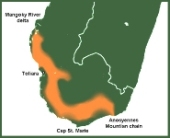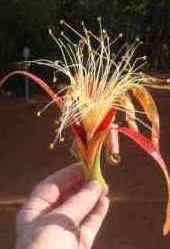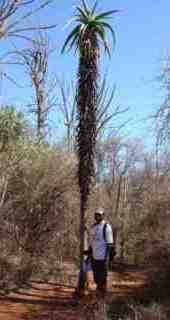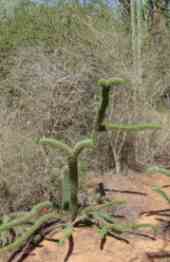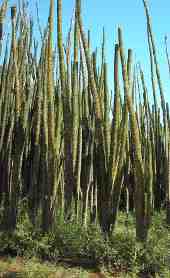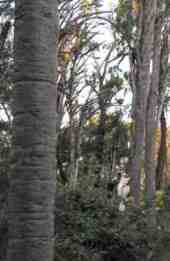Spiny Forest at Berenty |
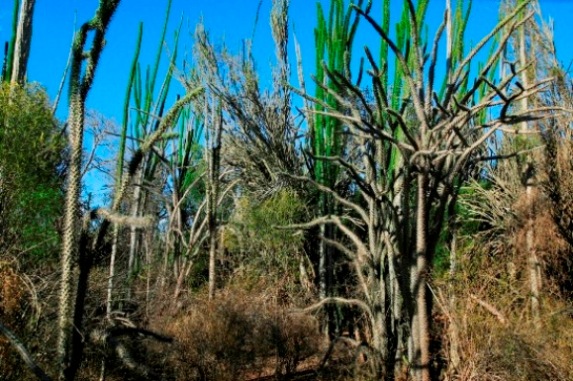
Spiny forest with octopus trees, Didierea trollii, in Anjampolo Reserve on Berenty Estate
© Cyril Ruoso, www.ruoso-grundmann.com
About Berenty's Spiny Forest |
The spiny forests (or thickets) of southern Madagascar are notable for having the highest percentage of indigenous plants on the island, an island already famous for having a greater number of endemic plant species than anywhere else on Earth.
Separated from the Indian subcontinent for 88 million years and from East Africa for even longer (around 125 Ma), a unique biodiversity has developed. Even within the spiny forest ecoregion plant assemblages are by no means uniform: rainfall is erratic, soils vary and distinct local species communities have developed. At Berenty, just on the edge of a rain shadow that intensifies westwards from the coastal mountain chain, rainfall over the last 25 years has varied from a low of 145 mm to a high of 910 mm a year. An additional variable is that the sandy soils and rocks are more water-retentive than those further to the south and west. In general plants across the region are tolerant of semi-arid to arid conditions having adaptations of succulent and reduced deciduous leaves, long taproots, enlarged, succulent trunks and spines. These last do not seem to deter lemurs that leap blithely apparently unscathed from spiny branch to spiny stem to feed on leaves, flowers and fruits.
Links: http://www.eoearth.org/article/Madagascar_spiny_thickets?topic=49597; and
http://www.worldwildlife.org/what/communityaction/people/phe/family/madagascar.html
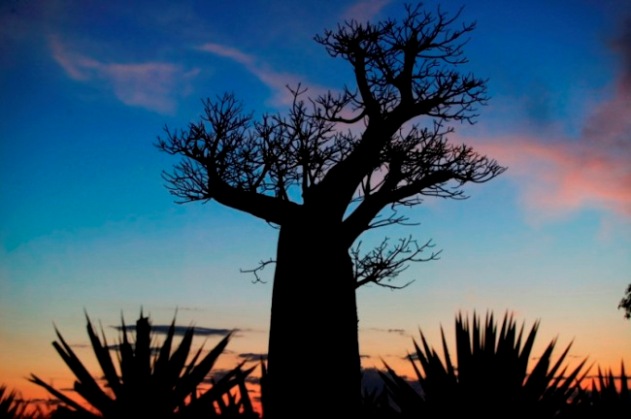 Baobab with Sisal © Cyril Ruoso, www.ruoso-grundmann.com |
|---|
The most iconic tree of the spiny forest is the baobab. There are six species native to Madagascar: at Berenty, Adansonia za is the most common, its leaves, seeds and fruit whose exterior looks like a velvety-green coconut can all be eaten by lemurs and humans.
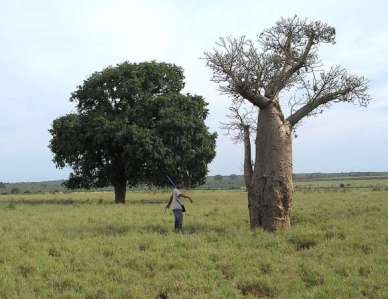 |
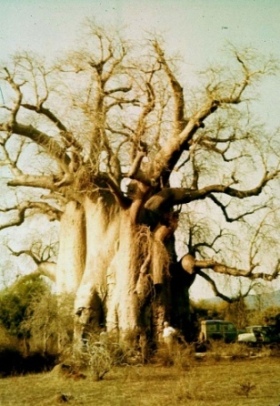 |
||
|---|---|---|---|
Adansonia za on the right has three fruits hanging from its right-side branches. Large baobabs and tamarinds (tree on the left) are protected by the locals who believe that it is fady (taboo) to cut them down © photo by V Winchester |
The largest A. za baobab growing in the Mandrare Valley, with Alison's father for scale © photo by A Jolly, 1963 |
Although smaller than the giant baobab, the dominant tree in the Berenty spiny forest is Alluaudia procera (Madagascar Ocotillo) looking like, but not, a cactus. In its early years it takes a shrub form with vertical stems sprouting pairs of deciduous leaves each pair embracing a 2.5 cm-long spine, with these assemblages spiralling up the stem. After about 30 years the basal stems die off leaving branches higher up on a main trunk that can grow to 20 m. It is useful as a food source for lemurs and supplies planks and charcoal for people. Other Alluaudia species at Berenty are A. dumosa also developing a central trunk up to 8 m-tall but with leaves only on new growth and the small A. humbertii, with horizontal or drooping branches.
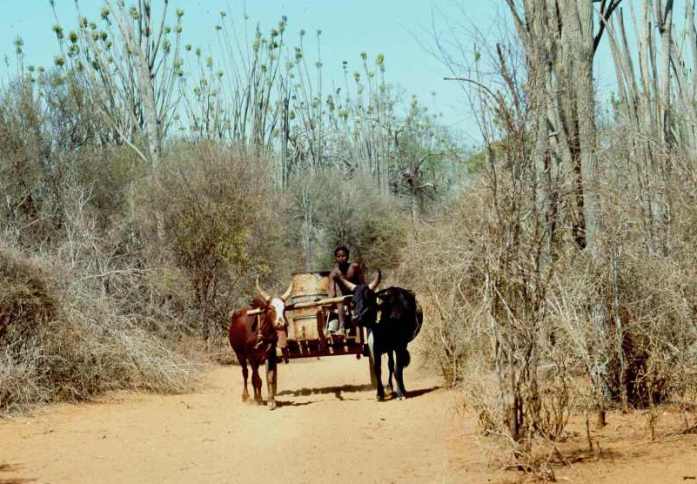 Ox cart fetching water from the river. The A. procera are in flower © photo by A Jolly
Ox cart fetching water from the river. The A. procera are in flower © photo by A Jolly
Flora in the Spiny Desert
© photo by V Winchester
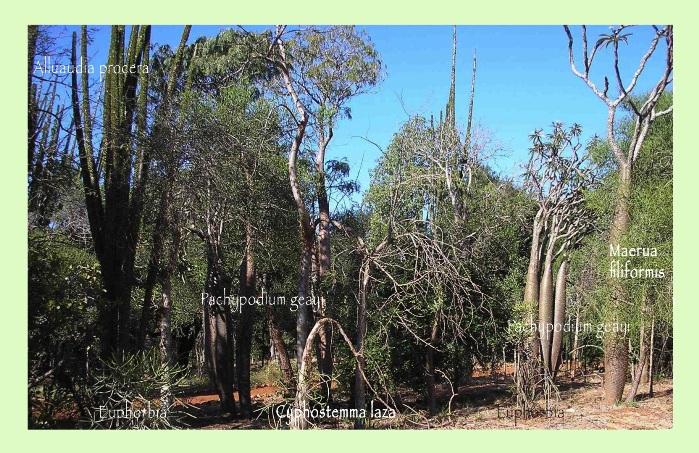 |
|---|
The large tree on the left is Alluaudia procera. Foreground left: sausage-like leaves of a Euphorbia bush. Background: three trunks of Pachypodium geayi. Foreground in sun, conical base and vine-like top, Cyphostemma laza with its top sprouting as a climbing liana (in the photo it has not found anything to cling to). Triple trunked tree in sun another Pachypodium geayi, with a larger one to the right with the trunk tapering into the ground. The filmy foliage in front of it on the extreme right is Maerua filiformis, an odd tree with both wire-like and little round leaves interspersed: the round leaves are a favourite ring-tailed lemur food.
_MASTimg_BreakfastMale_(DC).jpg)
_MASTimg_BerentyWebsiteMasthead.jpg)





